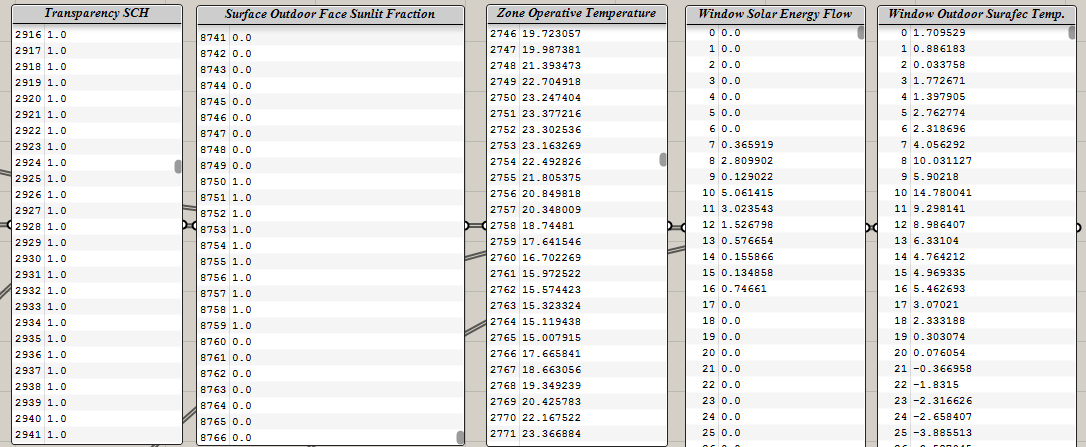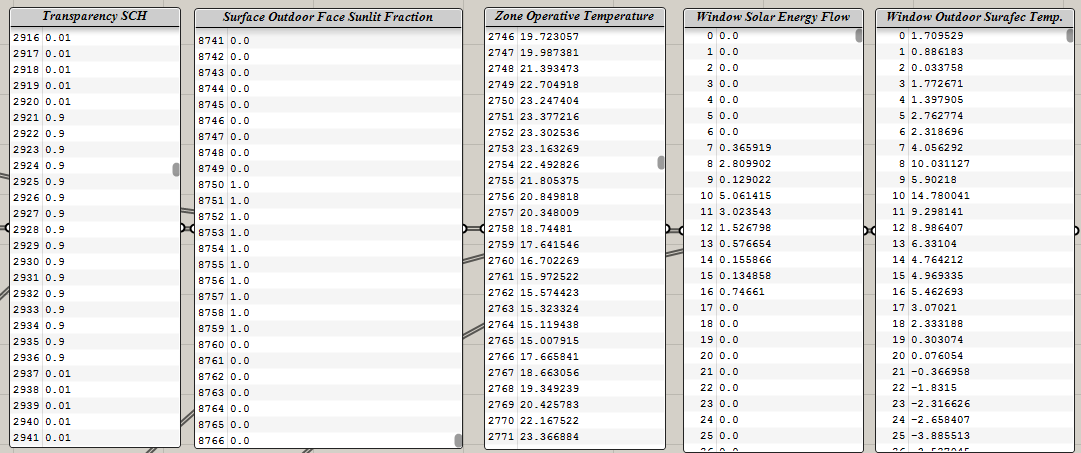Thanks @mostapha for your reply,
Both window outdoor temperature and the energy flow are the same which shouldn’t be…
This is excluding EMS string…
And this is including the EMS…
test03-EMS.gh (624.4 KB)
BUT, when I copy the overwritten schedule into a panel (the one that I obtained after implementing EMS) and import it to the EPTransschedule of the Hb context component like a normal case, the results will change proportionally…


